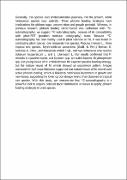11C-autoradiographs to image phloem loading

View/
Date
2019Author
Hubeau, Michiel
Mincke, Jens
Vanhove, Christian
Gorel, Anaïs Pasiphaé
Fayolle, Adeline
Epila, Jackie
Leroux, Olivier
Vandenberghe, Stefaan
Steppe, Kathy
Metadata
Show full item recordAbstract
Generally, tree species load photoassimilates passively into the phloem, while herbaceous species load actively. These phloem loading strategies have implications for phloem sugar concentration and growth potential. Whereas, in previous research, phloem loading identification was performed with 14C-autoradiography, we suggest 11C-autoradiography, because of its compatibility with plant-PET (positron emission tomography) scans. Because 11C-autoradiography has been hardly used in plant sciences so far, it was tested in contrasting plant species: one temperate tree species, Populus tremula L., three tropical tree species, Erythrophleum suaveolens (Guill. & Perr.) Brenan, E. ivorense A. Chev., and Maesopsis eminii Engl., and two herbaceous crop species Solanum lycopersicum L. and S. tuberosum L. Our results confirmed that P. tremula is a passive loader, and Solanum spp. are active loaders. Erythrophleum spp. and young leaves of M. eminii showed the expected passive loading strategy, but the mature leaves of M. eminii showed an uncommon pattern. Images corrected for leaf tissue thickness supported that mature leaves of M. eminii used active phloem loading, which is linked to continuous investment in growth and new leaves, supporting the lower carbon storage levels often observed in tropical tree species. With this study, we demonstrate that 11C-autoradiography is a powerful tool to acquire detailed tracer distribution in leaves to typify phloem loading strategies in plant species.
Collections
- Research Articles [23]
